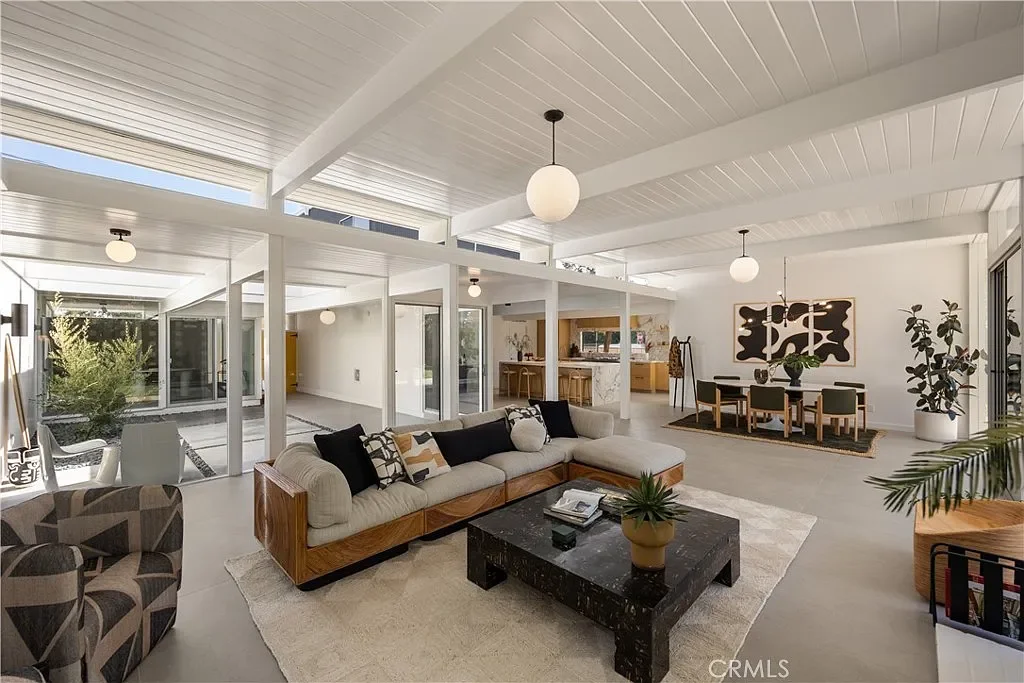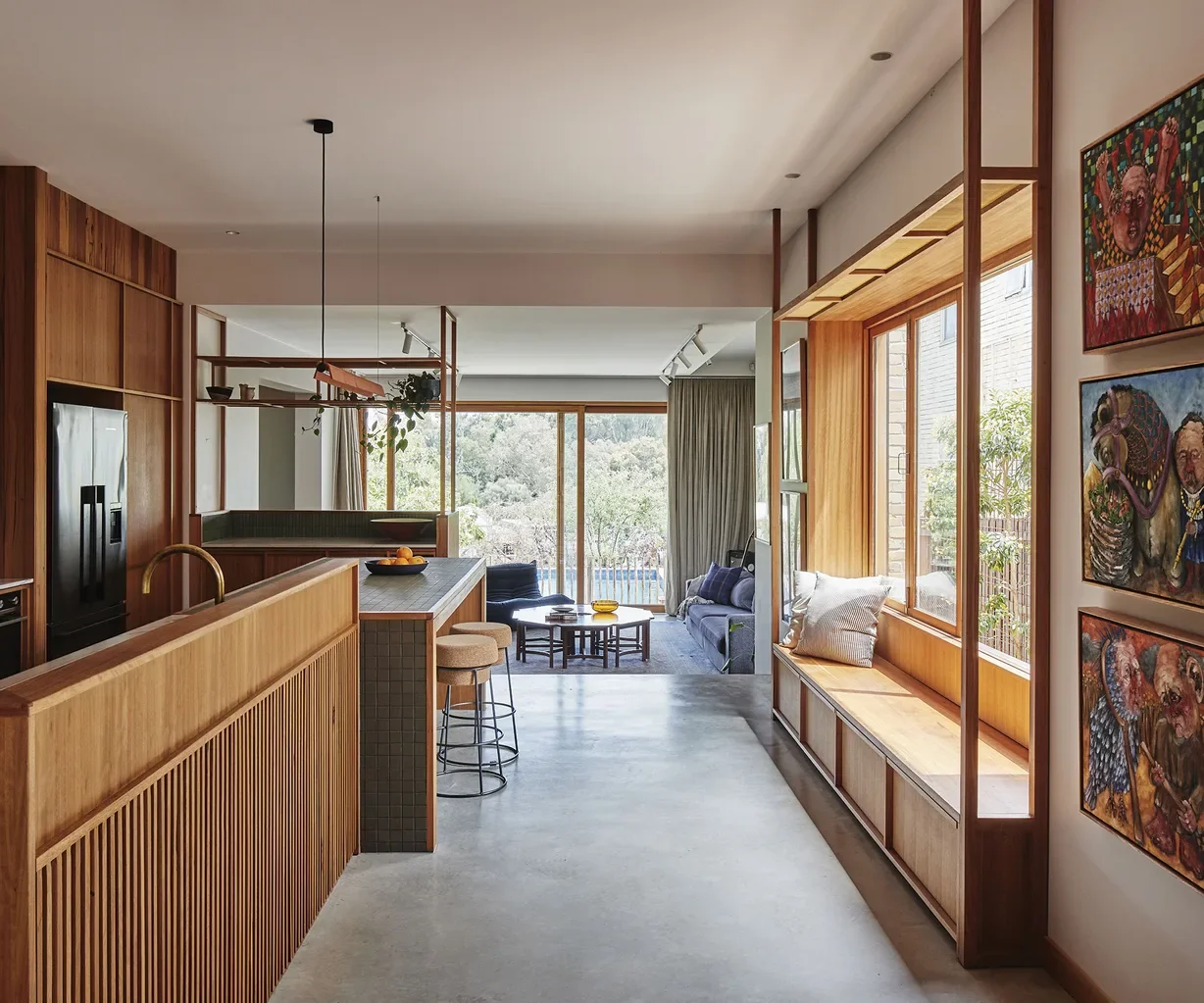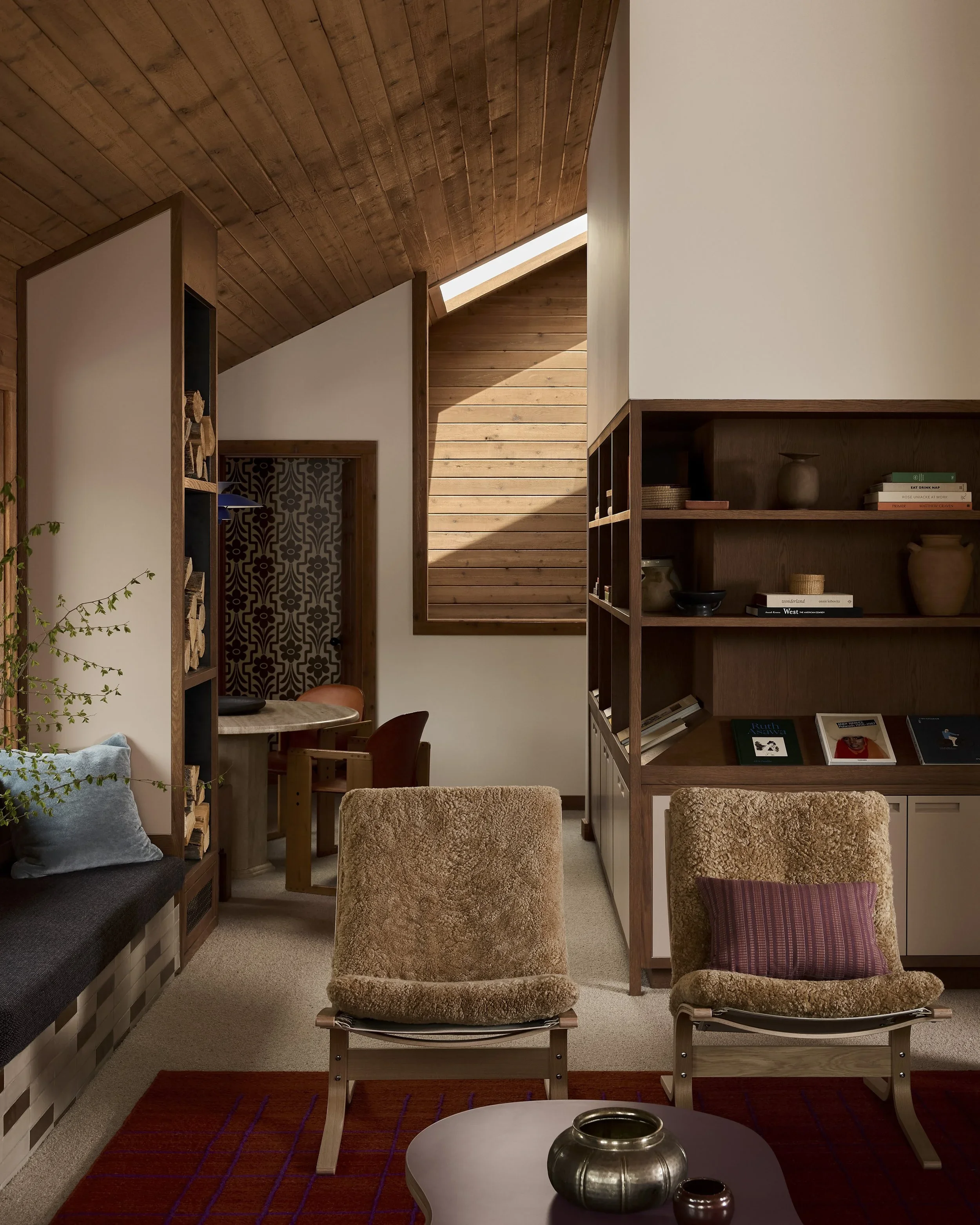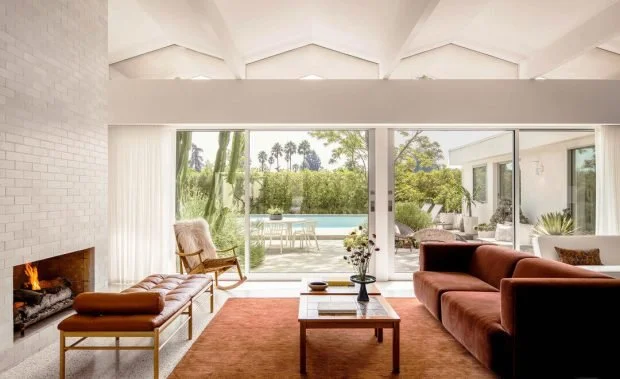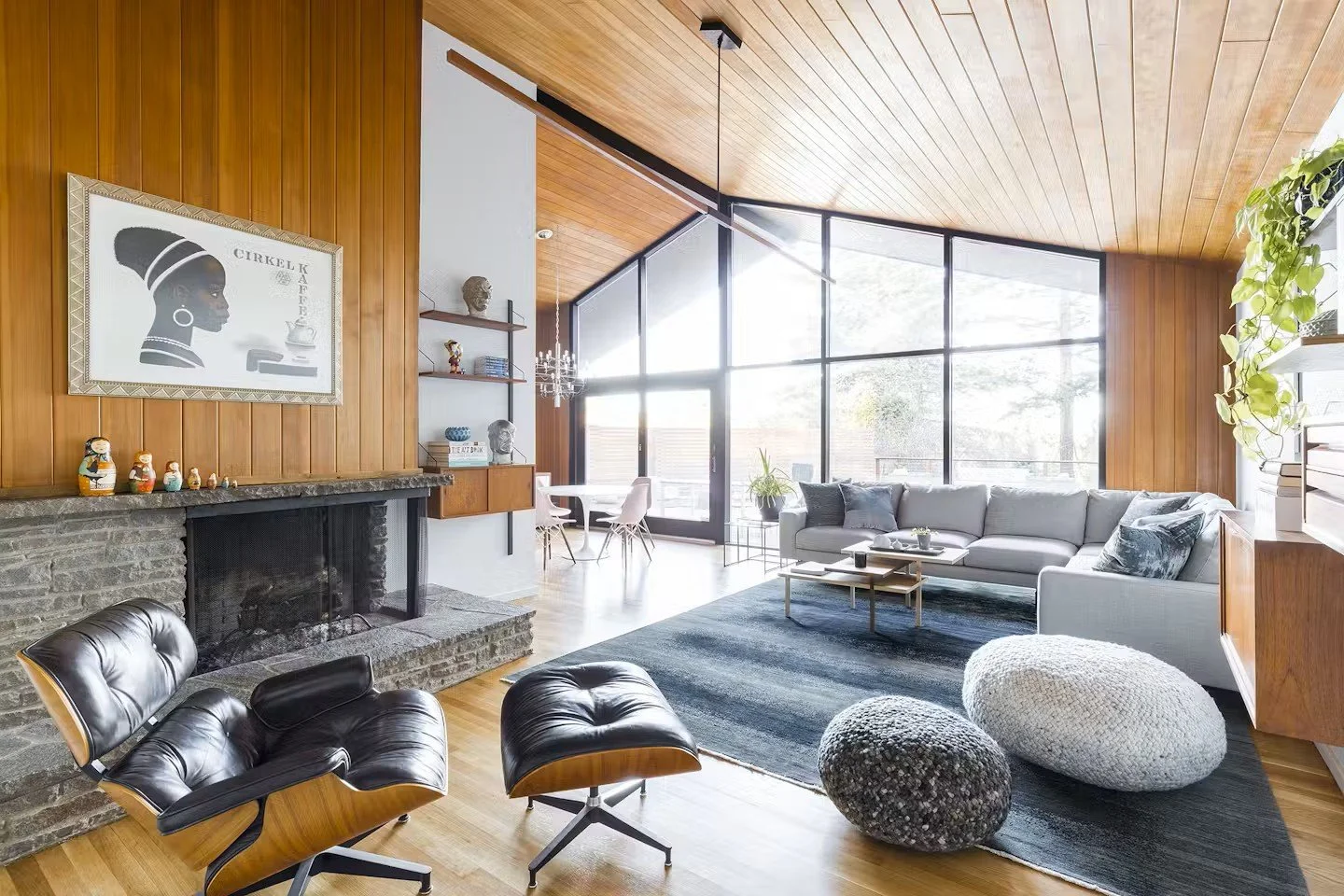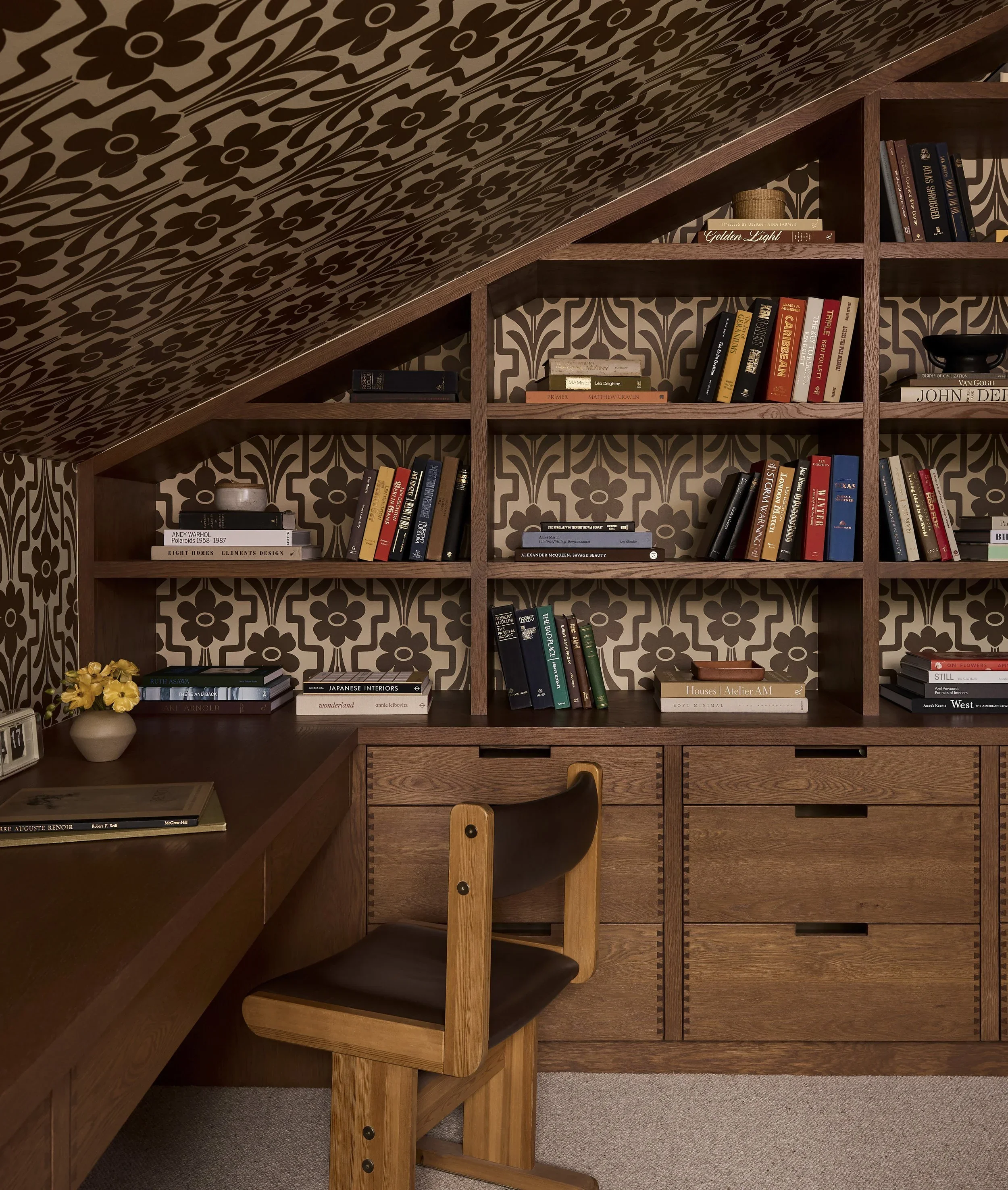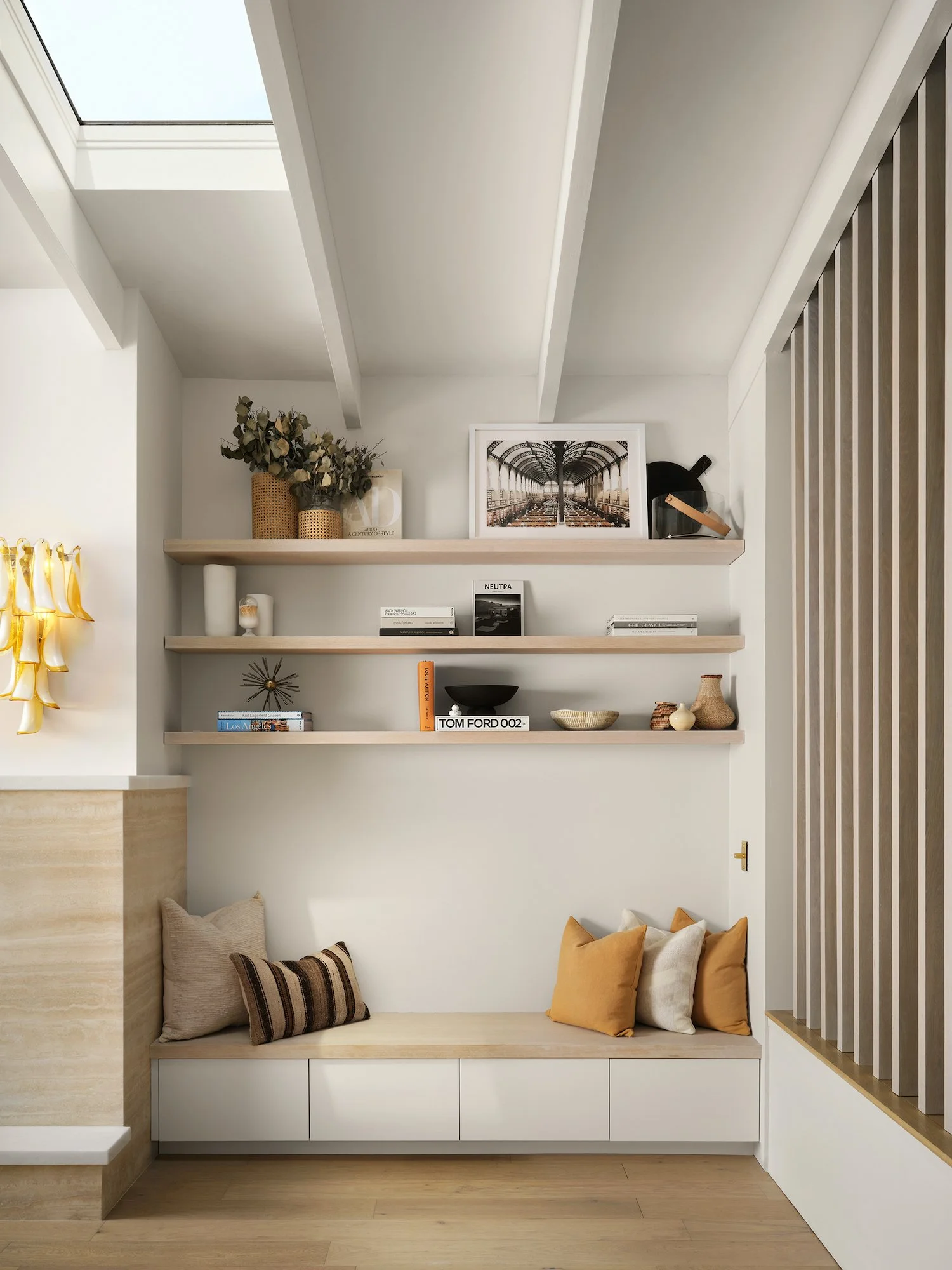A Designer’s Guide to Renovating Your Orange County Mid-Century Home
There’s something truly magical about a mid-century home—flat rooflines, long horizontal planes, and floor-to-ceiling glass that lets the sunshine pour in. This iconic design aesthetic is characterized by sleek lines, open spaces, and a blend of indoor and outdoor living. In Orange County, where the climate invites year-round al fresco living, this architecture feels especially well-suited—blurring the line between structure and landscape.
If you’re lucky enough to own one of these architectural gems, you already know: they deserve thoughtful renovation—ideally with the expertise of an experienced Orange County interior designer who respects the nuances of the mid-century interior design style. Done well, a mid-century renovation blends reverence for original details with modern livability, creating something that feels at once timeless and tailored. Whether you're opening up the layout, upgrading finishes, or refining the decor, here are a few expert tips to help you bring your space into its next beautiful chapter.
Embrace the Open Layout—But Define It with Intention
One of the hallmarks of mid-century architecture is the open floor plan—a forward-thinking idea that emphasized flow, light, and connection long before it became a buzzword. But not all homes from the era fully embraced it, and many have since been chopped up by misguided renovations. If your space feels disjointed, consider thoughtfully removing non-load-bearing walls to restore that sense of movement and openness.
That said, open doesn’t mean empty. A well-designed layout uses both architecture and furnishings to subtly define zones. Wide transitions—especially those framed by cabinetry, shelving that wraps around a corner, or low partitions—allow your eye to travel freely from space to space while still giving each area its own identity.
Design Insight:
Our minds are surprisingly generous. Even when something like a table lamp or shelving unit partially “blocks” the view, your brain fills in the rest—especially across wide openings. Instead of fixating on keeping everything in your line of sight, focus on functionality and layering to create cozy vignettes. A strategically placed rug or reading chair won't break the flow; it'll enhance it.
Source: Zillow
Design by Joanna Gains
Use Planes and Transitions to Shape Space
Mid-century design is all about honoring horizontal and vertical lines. Use the planes of your ceiling and floor to delineate spaces in subtle, architectural ways. Consider stepping down into a sunken living area, varying ceiling heights, or changing flooring material to shift the mood from one zone to the next. These layered transitions allow the home to feel open and intentionally arranged.
Design Insight:
Use area rugs, lighting, and anchored furniture groupings to create cozy, functional zones. A low-slung sofa on a thick woven rug can instantly define a conversation area, while pendant lights or directional sconces help emphasize purpose without interrupting the openness.
Designed by MRTN Architects Source
Design by Yond Interiors
Respect the Aesthetic—But Make it Your Own
The mid-century interior design style celebrates simplicity, honesty of materials, and organic forms—principles that still resonate deeply in well-designed homes today. But that doesn’t mean your home has to look like a time capsule. Channel the spirit of the era with clean-lined furniture, warm woods, and low profiles—but make it yours.
Pro Tip:
Modern luxury is all about restraint. Invest in timeless pieces: a sleek walnut console, a sculptural chair with worn-in leather, or a minimalist pendant light that nods to the 1960s without screaming retro. Layer in era-inspired colors—like olive, ochre, or rust—through art, upholstery, or even tile. Just keep the palette curated, not chaotic.
Designed by MRTN Architects Source
Let Natural Light Lead the Way
Glass walls and clerestory windows are some of the most beloved features in mid-century homes. If your home has them, preserve them. If it doesn’t, now is the time to consider strategic additions. Oversized sliding doors, skylights, and floor-to-ceiling glazing can drastically improve the way your home feels from morning to night. You can also use mirrors or glossy surfaces to reflect light deeper into the home. A mirrored wall behind a floating console or a metallic backsplash in the kitchen can subtly bounce light and expand space.
Pro Tip:
Don’t let window treatments be an afterthought—they should complement the architecture, not compete with it. For sun protection that doesn’t block a killer view, opt for minimal roller shades that filter light without distraction. Where privacy or blackout is needed, floor-to-ceiling drapery on a recessed ceiling track adds softness and function without interrupting the clean lines of floor to ceiling glass.
Design by Studio Mellone
Create Seamless Indoor-Outdoor Connections
One of the joys of mid-century design is the blur between inside and out. Renovating with this in mind means more than just opening up the back of the house—it’s about material continuity. Think terrazzo that flows from the living room onto the patio, brick that wraps from the fireplace out to the exterior wall, or slatted wood ceilings that stretch across the soffit outside.
Design Insight:
Low-slung rooflines and extended overhangs are part of the DNA. If you're renovating, consider enhancing or restoring these features—they provide sun protection and style in equal measure. And treat your outdoor space as a true extension of the home—furnish it thoughtfully with pieces that mirror your interior materials, and build in elements like outdoor storage, integrated planters, or a modern fire pit.
Design by Studio Mellone
Photo by AG Milworks
Invest in Materials That Stand the Test of Time
Mid-century homes were built with longevity in mind—and your renovation should follow suit. Avoid overly trendy finishes and instead focus on material integrity. Natural wood, stone, handcrafted tile, and metal finishes that patina over time will feel more authentic and luxurious than anything flashy or synthetic.
Pro Tip:
Don’t rip out the good stuff! If you’ve inherited original built-ins, paneling, or wood floors, refinish and reinterpret them. They’re what make your home special.
Designed by Penny Black Interiors
Designed by Barbara Bestor
Layer In Personality—With Thoughtful Restraint
A mid-century home doesn't need a lot of embellishment. But that doesn't mean it should feel generic. Art, textiles, and collected objects should be curated and intentional—each piece telling a bit of your story. The best spaces feel designed, not decorated.
Pro Tip:
Try pairing something vintage (like an Eames lounge or a George Nelson lamp) with something unexpected and current. This juxtaposition gives your home a sense of timelessness that never feels stuck in the past.
Design by Yond Interiors
Designed by Christina Kim
Conclusion
Renovating a mid-century home is equal parts preservation and possibility. In Orange County, where indoor-outdoor living is a way of life, these homes are perfectly suited for a thoughtful refresh. Embrace the unique architectural features, keep the materials honest, and infuse your personal style. With the right balance of reverence and reinvention, your home can celebrate the best of the mid-century era while giving you the comfort and tailored functionality of modern life.
Looking for thoughtful, expert design for your Orange County mid-century home? As an Orange County interior designer with a deep appreciation for the mid-century interior design style, we’d be honored to help—reach out to get started.


